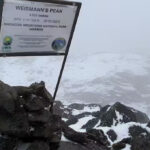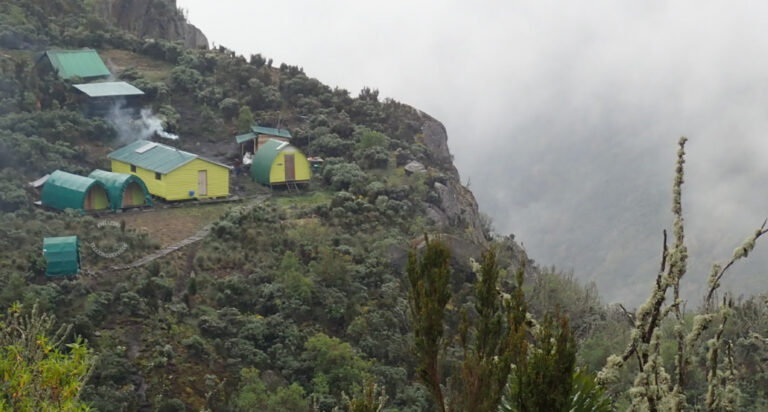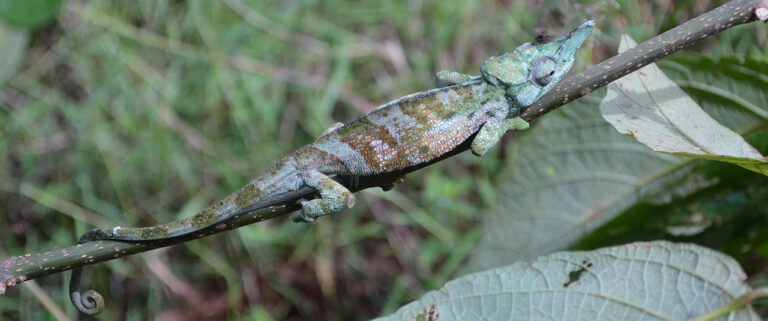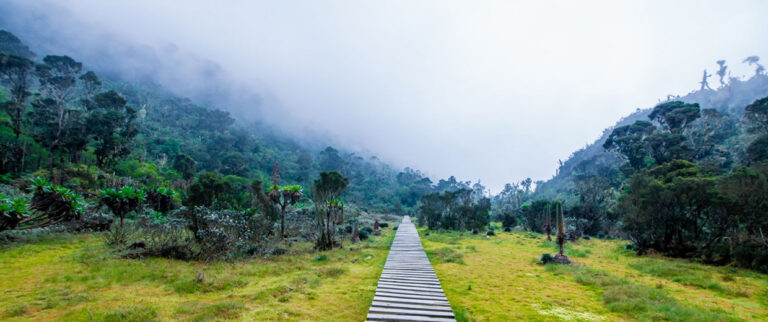Main Info
Hiking Rwenzori mountains is one of the most amazing experience to encounter during the trip in Uganda. With 6 massifs, there are different routes one can opt for for the best views and climb. Among these routes include the luxurious Kilembe route which has well developed huts, hospitality and friendly staff plus a healthy deity.
The route consists a number a package favorable to all travelers and among these include the 7 days Baker and Weismann peak luxury package which leads you to the beautiful Mount Baker, the home of Edward’s Peak. The hike is one of the challenging climbs as the rocks in the trail are smooth and it is glaciated and ice covered thus making it slippery. The hike provides perfect views of Mount Stanley, with the glaciated peaks of Alexandria and Margherita.
You will hike to Hunwick’s Camp, to Oliver’s Pass and Weismann’s peak at 4,620 meters and then down to the Nyamwamba valley where you will view many beautiful waterfalls.
Day 1: Start the hike up to Sine Hut at 2,596 meters
On the first day of the hike, you will have your breakfast at the lodge in Kasese and then meet the team for your 7 days 6 nights hike of the ice glaciated mountain. You start by walking up the valley floor through tall forest trees of the Afro Montane Forest Zone. This is a steady climb with multitudes of birds and a chance of seeing blue monkeys scampering off through the forest. At times visitors may see troupes of 15 to 20 black and white Colobus monkeys as they swing through the tree tops. There are rare sightings of the L’Hoest monkey which are part of the Bakonzo cultural emblems and are protected by the virtue of the King or Omusinga or you may hear wild chimpanzee in the distance. There is wide variety of plant species from forest trees to bamboos thickets, low shrubs, flowers, fungi, and with many moss and lichen covered vines hanging from the tall trees creating an awesome appeal. Enock’s Falls are just 200 meters from Sine Hut and offer a splendid opportunity to capture a great screensaver for your memories.
At Sine Camp 2,596 metres we have wooden huts set between tall forest trees on a narrow ridge where you may sit and enjoy the beauty of the Afro Montane forest while you look down at a fantastic waterfall crashing over the rocks far below. Some clients prefer to sit outside enjoying the warmth of the campfire and chat to the guides about the mountains and life in their community. Sine is just below the bamboo zone and the area around has many different bird species. 150 meters from the camp is Enock falls which is set in livid green vegetation and hanging vine. Truly beautiful.
Sleep at Sine Hut
Day 2: Climb to Mutinda Camp at 3,582 meters
Trekking starts at 8.30am and almost immediately you enter the Bamboo-Mimulopsis Zone which is steep climb with many high steps. In the wet season the bamboo zone is rather muddy and slippery making the going slow. However, the atmosphere and the forest is beautiful as you climb 551 metres altitude and a distance of 1.8km to Kalalama Camp at 3,147 meters which is in the Heather-Rapanea Zone where you can take a rest and a quick cup of tea or coffee before heading on to Mutinda Camp. The trail meanders up and over several small knolls along a ridge top then drops down the side of the valley before climbing again, and in doing so cross several small streams and pass close to moss covered waterfalls. You then climb steadily along the side of a beautiful mossy river which tumbles down over the rocks under the Giant Heather trees whose trunks are covered in green moss with old man beards (Usnea lichen) hanging from the branches. The trail twists and turns as you climb up the deep valley, which has an enormous variety of plants and flowers. This valley is unique with many Giant Heather trees creating a beautiful atmosphere often shrouded in mist.
In the afternoon you may wish to climb up to the top of the Mutinda Lookout (one to two hours up and one hour down) The views are amazing as you stand on moss covered rocks at 3,925 meters with views across the Rwenzori Mountains and down to Kasese town and Lake George. For those clients who are climbing to Margherita or any of the main peaks climbing Mutinda 3,975 meters is also an excellent way to acclimatise and reduce the risk of high-altitude sickness
Sleep at Mutinda Camp at 3.582 metres.
Day 3: Trail to Bugata Camp at 4,100 meters
The trail to Bugata Camp is boggy particularly in the wet season but with a little skill you can step from tussock to tussock to make the going easier. First you cross the Mutinda valley through the tussock grass and everlasting flowers interspersed with many Giant Lobelias before climbing a steep section up to the Namusangi Valley (3,840 meters), with sheer waterfalls and looking back you get fantastic views of Mutinda Peaks. The Namusangi Valley is wide, with many ups and downs as the trail climbs steadily to Bugata Camp at 4,100 metres.
Overnight at Bugata Camp
Day 4: Hike to Hunwick’s Camp Via Bamwanjara Pass
As you leave Bugata Camp you pass up a ridge then drop down slightly before ascending to Bamwanjara Pass at 4,450 meters where we have a hut should the weather turn bad. From the pass on a clear day you get excellent views of the three main peaks. The trail passes down the valley and around the edge of some bogs and thick ever green vegetation, moss. giant groundsel and lobelia. Here is possibly the best place in all the Rwenzori to observe the Malachite Sunbird as it feeds on the many lobelia flowers and a known breeding site. Farther on there is some steep sections before a steady climb up and over a ridge to Hunwick’s Camp which is situated on the top of a deep valley and has good views of Mt Stanley, Mt Baker, Weismann’s Peak and McConnell’s Prong.
Sleep at McConnell’s Camp
Day 5: Hike to Mt Baker Peak at 4,842 meters
Set off by 6.30am to climb the Mt Baker Peak 4,842 metres. Ascent time from McConnell’s Camp (Camp 4) to the top is three to four hours and descent three hours. This is a steep rocky climb where you need a good head for heights as some sections like the crevice climbing down to the glacier has a sizeable drop off the side. Although steep Mt Baker is considered non-technical except in the snow season (wet season) of April-May and September-October when it is very slippery on the ice-covered rocks, nevertheless safety ropes will be used at all times on steep sections. After climbing up you descend along a crack in the rock face to the glacier and a short 300 metre walk to the peak.
If we have fine weather or a break in the cloud the views of the main peaks of Margherita, Alexandria, Stanley’s plateau and the glaciers are fantastic as you see the splendour of these beautiful snow-capped mountains. The view is awesome!! After absorbing this lifetime experience, we walk back across the glacier climb back up the crack in the rock face and descend to McConnell’s Camp. Sleep at Camp 4.
Day 6: Descend to Kiharo Camp
From Hunwick’s Camp we start the day by climbing up a ridge towards McConnell’s Prong where you get the best views of all three peaks and Scott Elliott’s Pass before reaching Oliver’s Pass at 4,505 metres. The distance from Hunwick’s Camp to the top of Oliver’s Pass is 3km. The trail then cuts across below Weismann’s Peak to the confluence of the Nyamwamba River which flows down thought Kilembe and Kasese to Lake George in Queen Elisabeth National Park.
If you wish to climb Weismann’s Peak 4,620 metres from Oliver’s pass you may do so at an extra cost of $20 each. On a clear day you get fantastic views of Margherita and Mt Stanley, Mt Speke and Mt Baker.
After crossing the confluence, the trail meanders down the valley to Kiharo Camp at which is situated in a deep valley with high cliffs and dense vegetation. On the way down the valley after each bog you will climb over a ridge of stones and earth which seems out of place but actually was pushed there by slow moving glaciers which eventually stopped moving, melted and left a pile of rocks and debris in front of where the glacier once stood.
Day 7: Descend from Kiharo Camp to the park gate and then to Trekkers Hostel
The trail down the Nyamwamba Valley is mostly downhill and absolutely stunning with beautiful views, moss covered rocks along the river, cascading waterfalls, deep valleys and forests are possibly the best in the Rwenzori Mountains. This part of the trail took us six years to find a way through and a route which is easy enough for tourists to use. In 1937 the explorer and geologist McConnell tried to find a way up this valley but failed and have to turn back and search for another route up the mountain but now you can experience this truly beautiful valley.
A few kilometres from Kiharo Camp the path turns off to the right to pass along the river. In the clear areas you may catch a glimpse of a Duiker quietly feeding in small clearings as you pass along the river. If you wish you may prefer to walk down the river itself hopping across the rocks as you pass down. A few kilometres down the river it becomes very steep with multitudes of waterfalls so we have to move away from the river and follow a narrow ridge to bypass steep sections. At the bottom we again meet the river where there is a huge rock shelter and a place to rest for a while. After crossing a small stream, you climb up a gentle slope before turning back down to the river to avoid another set of waterfalls which are impassable. The forest along this section is magnificent and full of life with many birds, primates, duikers and hyrax. A great experience and ending to a fantastic trek.
Includes in the package Quotation
- Accommodation at the campsites of the mountain
- Meals
- Porters and park rangers
- Hiking permits
- Park Entrance fee which is USD 35 per person per day. This amount is paid separately from the UWA fees
- Mineral water
Excludes from the quotation
- Tips




